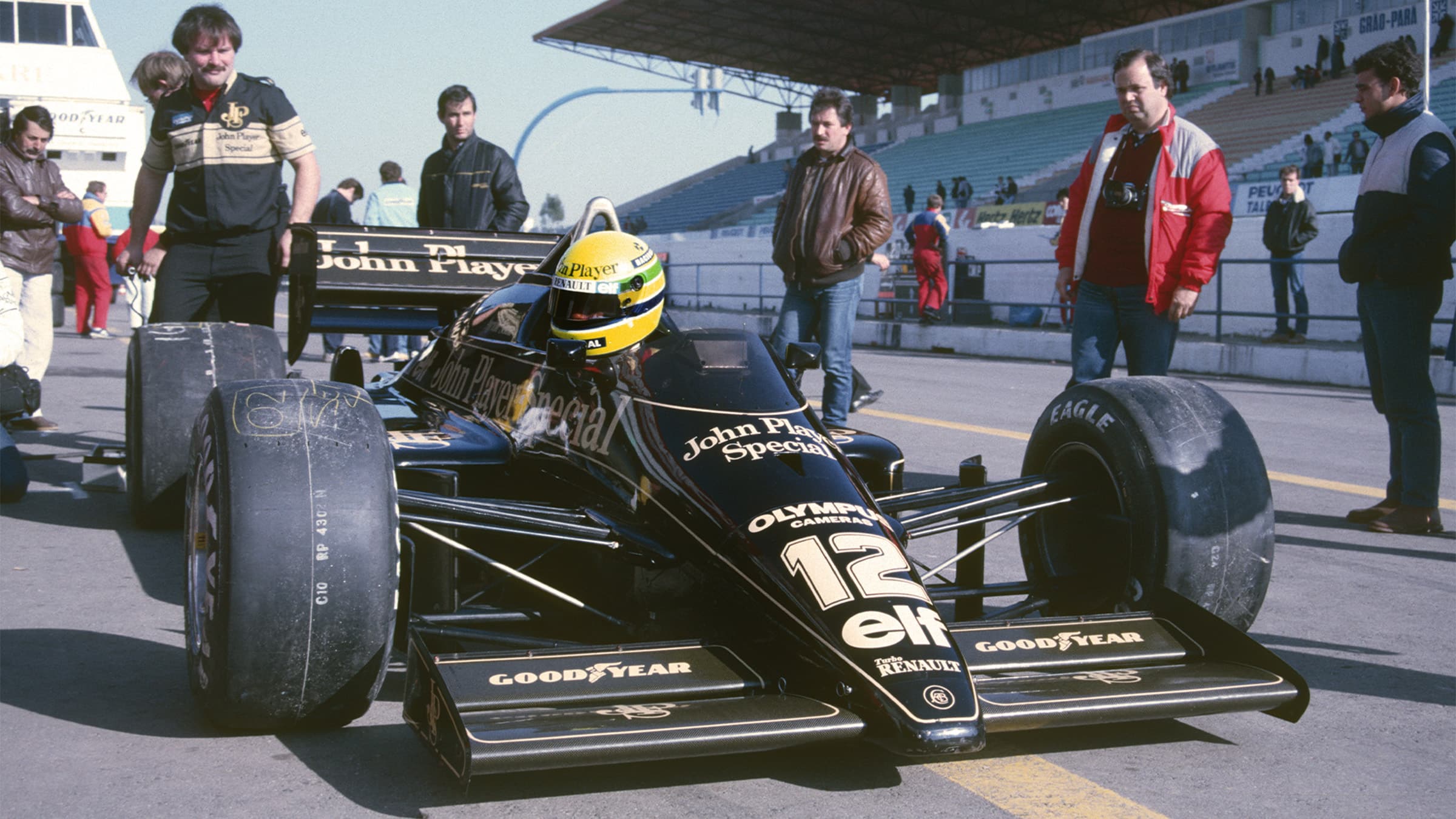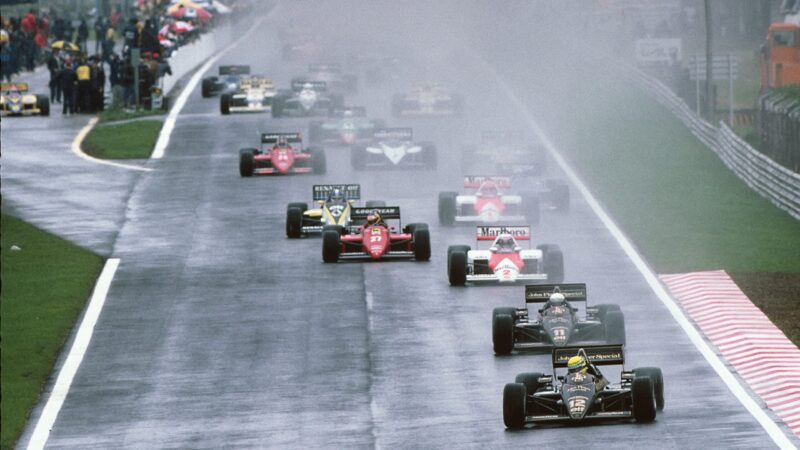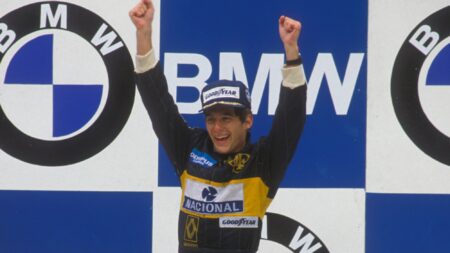At the same time, Lotus — once an ever-present and dominant force at the front of the F1 field — was struggling for performance. The team had not won a race since the death of its owner and talisman Colin Chapman in 1982 and were in need of a driver who could re-boost its championship standing.
A partnership between the two parties came almost naturally, and their combined performance proved fearsome.
On debut, Senna qualified fourth on home turf at the Brazilian GP — three-tenths behind Lotus team-mate Elio de Angelis. He ran a solid third for the race’s vast majority, but saw his chances of standing on the podium in front of an adoring home crowd evaporate as the ignition system failed on his 1.5-litre turbocharged Renault Gordini engine.
But just two weeks later, the Brazilian would have his day.
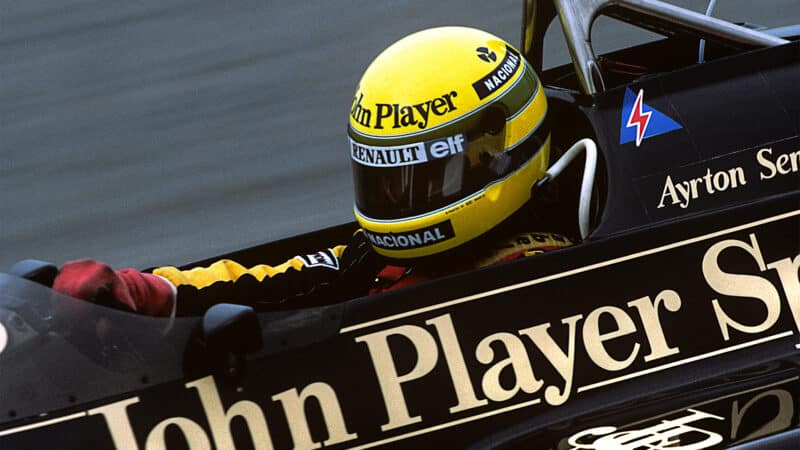
Senna and the 97T made for a perfect picture
Getty Images
While heavy rain plagued the vast majority of the 1985 Portuguese GP weekend, it did little to deter Senna from fully establishing himself as the world championship’s brightest new star.
His pole-snatching lap was a second clear of De Angelis and his excellence continued to astound on race day. After pulling away slowly in monsoon conditions, Senna was 13sec clear of the field by lap 10; 30sec clear by lap 20; and 62sec clear by the time he reached the chequered flag.
“If I say it was a great moment, that was the world’s biggest understatement,” Senna’s Lotus and McLaren race engineer Steve Hallam later told Motor Sport. “It was a very special moment.
“Having gone through two hours of racing, non-stop, no pit-stops, no safety cars, – the release of tension was phenomenal. Then there was the recognition that ‘Oh my god, this guy is truly special, this isn’t just a one-off’; the way we were all able to acknowledge the win was just great.
“He taught everybody a lesson in how to drive in the rain and really placed himself on the map.”
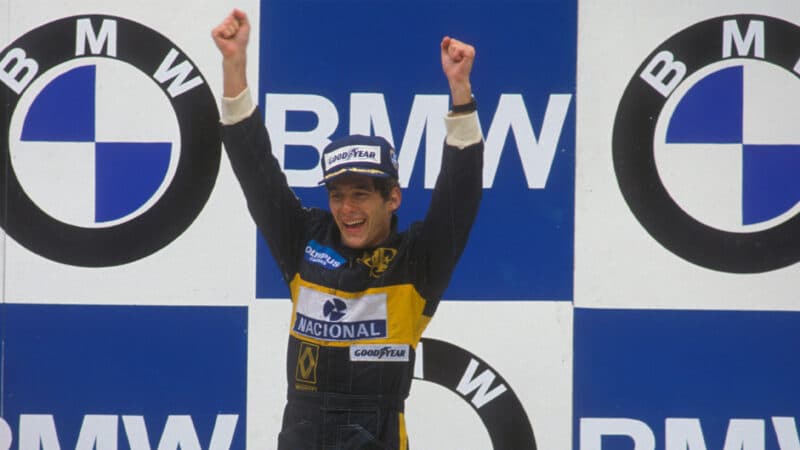
Senna tops the podium for the first time in his career at the 1985 Portuguese Grand Prix
Getty Images
After Estoril, Senna and the 97T continued to set the F1 world alight.
He secured six further pole positions in Imola, Monaco, Detroit, Monza, Brands Hatch and Adelaide — cementing himself as the arguably the fastest driver on the grid over the course of a single lap.
Senna’s unrelenting pace also challenged front-runners on race day too, resulting in the Brazilian scoring podium finishes at the Österreichring, Zandvoort, Monza and Brands Hatch as well as a second race victory at Spa-Francorchamps — where he bested Nigel Mansell‘s second-placed Williams by almost 30sec.
Reliability would be the only thorn in team’s side in 1985, as Senna failed to finish nine of the sixteen races he entered. Nevertheless, he was still finished fourth in the drivers’ championship, and helped Lotus to secure third in the constructors’ — only 11 points behind Ferrari and 19 behind title-winners McLaren.
But while it may not be a title-winner, the success of the 97T was profound. Not only did it give Lotus, after a period of tragedy and darkness, a chance to shine once again in motor sport’s top echelon, but it also acted as the vessel in which one of F1’s most legendary figures staked his first claim on the world championship.
